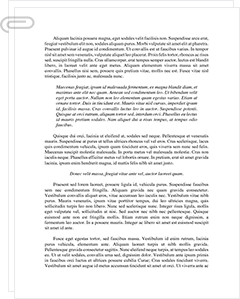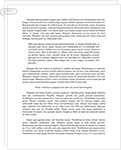 Study Document
Study Document
Early Childhood Reading Education Essay
Pages:3 (922 words)
Sources:3
Subject:English
Topic:Common Core Standard
Document Type:Essay
Document:#36866626
common core state standards are a set of standards that have been adopted for K-12. States have the ability to adopt the federal CCSS. The CCSS intended to provide new expectations for each grade level.
There are a number of different instructional approaches for language. Meaning-based approaches are based on the idea that children learn about literacy mainly through activities, interaction and observation, with little need for formal education. Skills-based approaches are those rooted in five core skills that are related to literacy: phonemic awareness, phonics, vocabulary, comprehension, and fluency. Students learn to read by learning skills related to these elements. The blended approach combines the two, where teachers help the students to build on the base that they acquire via the meaning-based approach.
Meaning-based and skills-based perspectives need to be interwoven to provide effective preschool and elementary school education. There are several traits of effective teachers that go along with this. First, they teach children the basic skills that support learning, with a print-rich environment with a lot of reading material, and will support children's interactions with print. Teachers not only read to children daily but also encourage them to read on their own as well. A good teacher will also facilitate collaboration between students, so that they can help each other to learn and acquire key skills. There should be links in the classroom between literacy and play, and the children should be provided with opportunities to use literacy in real world situations. Further, multiple forms of assessment should be used to evaluate the children, to provide a more comprehensive picture of their progress.
The big ideas in this chapter are the common core standards, the three different perspectives for learning language and the different principles of effective teaching -- the three ideas discussed above.
CE 310 Unit 2
From birth to age 6 the focus is one building the pre-reading skills. These are phonological awareness, alphabet knowledge, print awareness, vocabulary, and oral language. These skills form the basis for learning how to read, a process beginning in Grade 1 or age 6. In the primary grades, the focus shifts towards building other skills: phonemic awareness, phonics, fluency, vocabulary and comprehension. Understanding the reading process is important there. The reading process is predicting, checking and integrating. The reader will approach the text with predictions about it based on prior experience. The checking process is where the reader checks against the print and their experience and asks "does this make sense?." The final part, integrating, is where the reader asks "what does it mean?" From ages 6-8 the focus shifts to comprehension and strategic knowledge. Fluency is the latter end of this stage. Reading to learn occurs…
Sample Source(s) Used
Reference
Christie, J., Enz, B., Vukelich, C., & Roskos, K. (2013). Teaching language and literacy: Preschool through the elementary grades, fifth edition. Pearson.
Related Documents
 Study Document
Study Document
Special Education & Early Childhood Special Education
SPECIAL EDUCATION & EARLY CHILDHOOD Special Education Tasks in Special Education and Early Childhood Defining Intellectual Disability and Degrees Thereof Language is a powerful tool or a powerful weapon. The language used to described non-normative populations is often accompanied by a vigorous and often difficult discussion regarding what kinds of words are academically, professionally, and medically describing abnormal populations. One such term with an interesting history is the term "mental retardation." Within the
 Study Document
Study Document
Early Childhood Issues Since the
Findings from several research studies show that when computer software and classroom manipulatives were compared, "the computer software was found to be the more effective means of skill building in young children" (Hitchcock and Noonan, 2000). The key, it appears, is the judicious use of technology and the timeframe in which computers are used. Computer software can be used as a learning tool, but disguised as a game. Further
 Study Document
Study Document
Early Childhood Activities My Creative Activities Portfolio
Early Childhood Activities My Creative Activities Portfolio My Name CE230 Creative Activities for Young Children Final Project Activity # Creating a Leaf Character Ehlert, L. (2003). Leaf man. New York: Harcourt Children's Books. Age(s): wks-1 yr ages 2-4 ages 5 -- 7 ages 8 -- 10 ages 10-12 Time Required: minutes After completing this activity, students will be able to sort leaves by attributes (shape, color, size) and assemble them to create an original art project which they can then use as a story
 Study Document
Study Document
Early Childhood Development Research on the Brain
Early Childhood Development Research on the brain and early childhood development indicates that the first four years of life are a period of particularly rapid development of brain structures and function. According to Larissa Scott (2004) the potential of the brain can be enhanced by presenting the right experiences at the right times, in the right amounts. In the initial stages of life, children's brains can be compared to a sponge
 Study Document
Study Document
Early Childhood Education: A Defense
130). Interestingly, the research suggests that there is no specific early childhood pedagogy that is inherently superior rather what is important is that children receive exposure to learning as soon as possible. "While no single curriculum or pedagogical approach can be identified as best, children who attend well-planned, high- quality early childhood programs in which curriculum aims are specified and integrated across domains tend to learn more and are better
 Study Document
Study Document
Early Childhood Norm-Referenced Vs. Criterion-Referenced Test a
Early Childhood Norm-referenced vs. criterion-referenced test A norm-referenced test is an assessment that usually brings out an estimate of the position of the person who is being tested in a population that is predefined with the focus being the trait that is being measured. The estimate is normally obtained from analyzing the test scores as well as other data which is got from the population and is relevant .in this type of



